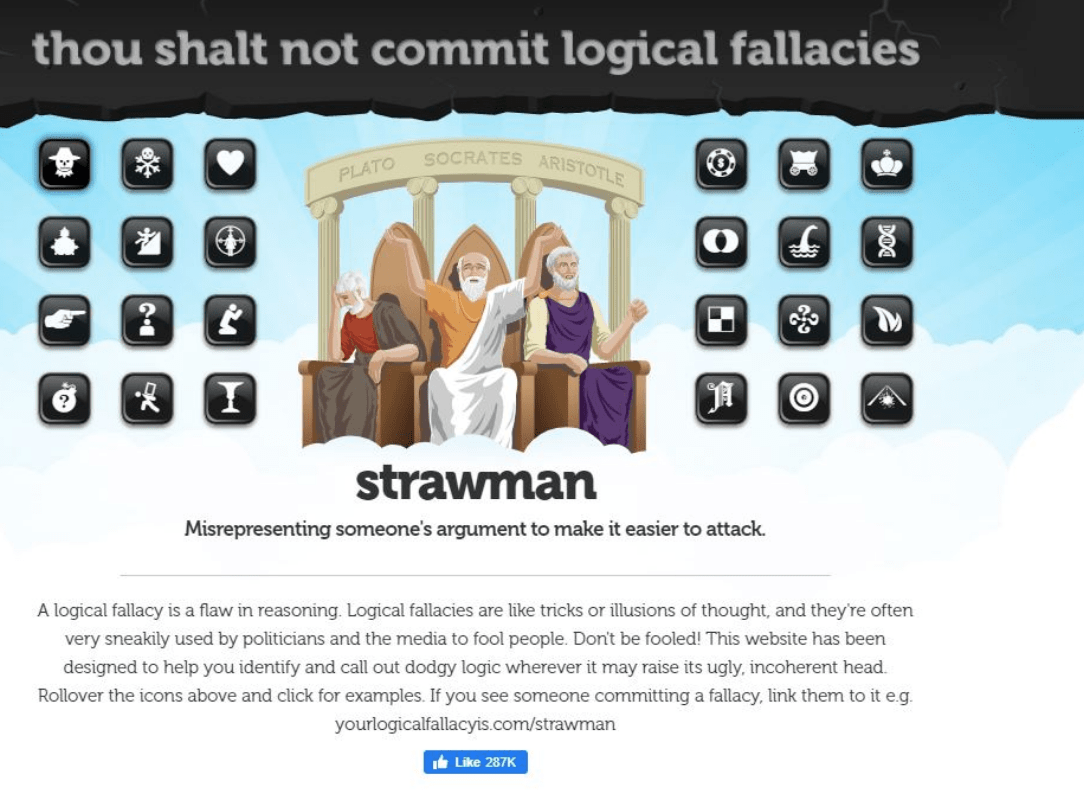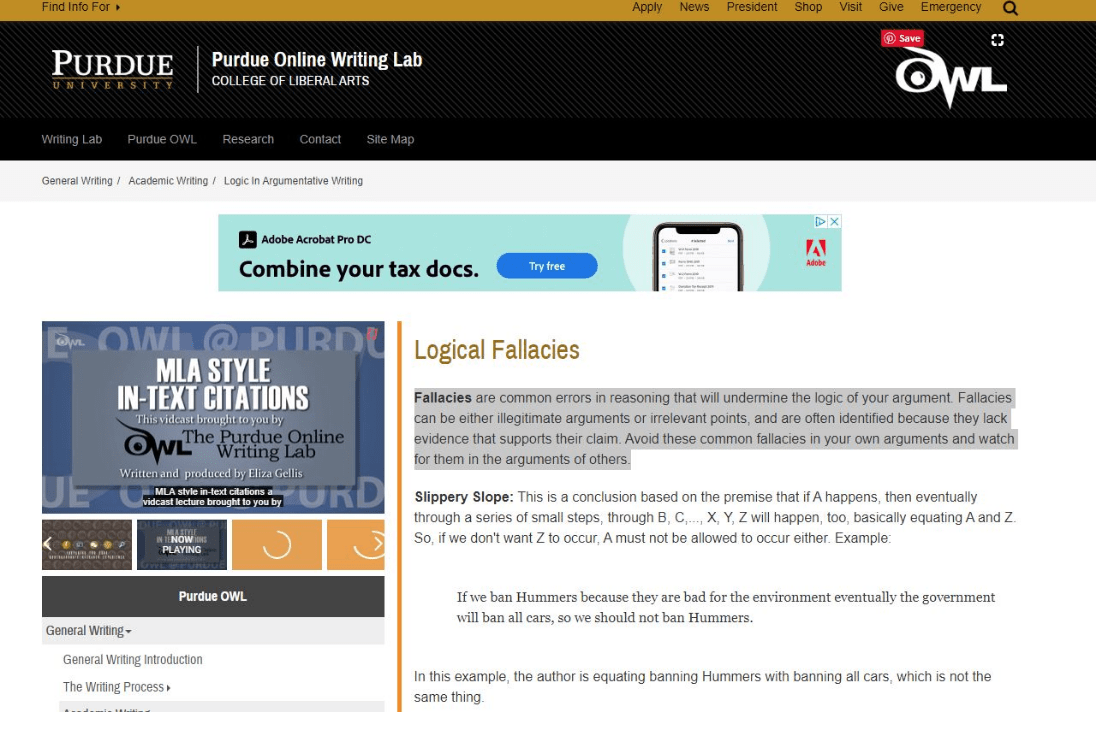Logical Fallacies

Being aware that logical fallacies exist is a good start to understanding to improving your ability to discern good information from bad when conducting online research.
A logical fallacy is a flaw in reasoning. Logical fallacies are like tricks or illusions of thought, and they’re often very sneakily used by politicians and the media to fool people. Don’t be fooled! The website, yourlogicalfallacyis, has been designed to help you identify and call out dodgy logic wherever it may raise its ugly, incoherent head. Rollover the icons of, yourlogicalfallacyis, and click for examples of each fallacy.

Fallacies are common errors in reasoning that will undermine the logic of your argument. Fallacies can be either illegitimate arguments or irrelevant points, and are often identified because they lack evidence that supports their claim. Avoid these common fallacies in your own arguments and watch for them in the arguments of others.
How does a fact become a misconception? Watch the video below, Why people fall for misinformation by Joseph Isaac.
In 1901, David Hänig published research that led to what we know today as the taste map: an illustration that divides the tongue into four separate areas. It has since been published in textbooks and newspapers. There is just one problem: the map is wrong. So how do misconceptions like this spread, and what makes a fake fact so easy to believe? What is the difference between misinformation and disinformation?

Leave a Reply